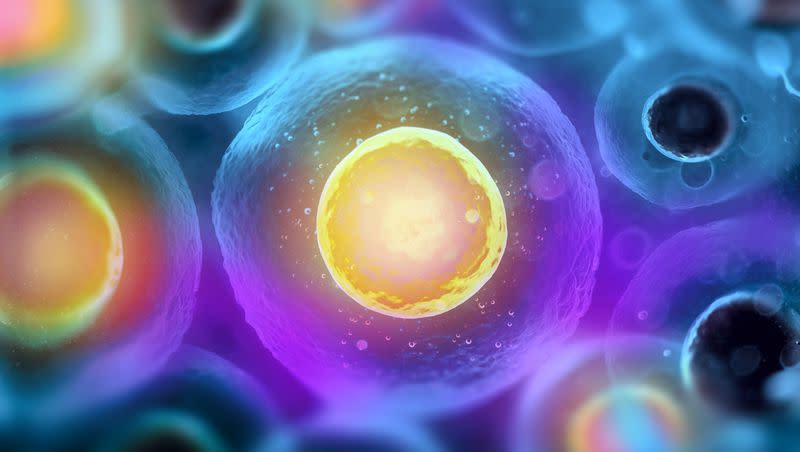Researchers learning how gene dysfunction contributes to autism, other brain disorders

Researchers over time have identified hundreds of genes that seem to contribute to brain disorders. Now a Stanford University-led research team has used high-tech tools and a petri dish brain model to understand some of the process that leads to neurodevelopmental disorders, including autism.
They hope the findings will help speed the process of developing treatments.
The research was recently published online in the journal Nature.
In a news release, the researchers note two main neuron types in the cerebral cortex: excitatory neurons that “fire impulses” to turn on other neurons, and inhibitory neurons that by firing block other neurons from firing. The two types join to form circuits that determine the brain’s signaling activity.
The researchers believe an imbalance in either the function or number of the two types of neurons could at least contribute to autism spectrum disorder and epilepsy, which are two conditions that often are found together.
“If that’s true, you could find ways to alter the functional balance of these cells in the cortex as a therapeutic approach for these disorders,” Dr. Sergiu Pasca, the study’s senior author and a professor of psychiatry and behavioral science at Stanford, said in the release. Xiangling Meng, a postdoctoral scholar, is the lead author of the paper.
Because previous research has identified hundreds of genes that are believed to contribute to neurological disorders, the researchers had to see if they could sort out what kind of impact large numbers of them have — a tedious, overwhelming task if done one at a time. Pasca noted that “a cluster of gene defects that all produce a similar physiological deficit might be amenable to a single type of treatment.”
Using new tools
Pasca had already created a technology that in a petri dish emulates how a human brain develops, since there’s no ethical way to study a developing human’s brain. His process uses growth factors, nutrients and a type of stem cell present during embryonic development to grow small clumps of tissue that simulate parts of the human brain. One part developed in the petri dish is markedly similar to the subpallium, which produces inhibitory neurons called interneurons in the developing brains of fetuses and infants. The interneurons travel to the cerebral cortex and other parts of the brain to work with excitatory neurons, forming circuits that can do complex signaling.
In the petri dish, that fusion was visible, as was the migration. Then they added CRISPR technology, which is often used in research to snip DNA to knock out specific genes.
“Pasca’s team, which included researchers from the University of California at San Francisco and the Icahn School of Medicine at Mount Sinai, tested 425 genes that have been linked to neurodevelopmental disorders to determine which ones interfere with the generation and migration of interneurons. Genes linked to autism were among those identified in the study,” The Washington Post reported.
Related
“What’s really cool about this paper is that autism is a collection of different behaviors, but we don’t have (an) understanding of how those behaviors are connected to differences in the brain,” James McPartland, a professor of child psychiatry and psychology at Yale School of Medicine, who was not part of the study, told the Post.
He said the new work advances autism research by beginning to reveal “a fundamental understanding of the building blocks of brain development.”
Hunting specific defects
The team made the cells that keep others from firing visibly glow green, then used the gene-editing tool CRISPR to snip out each of the 425 genes separately. They were seeking two defective gene types: Those that don’t create interneurons and those that do, but then don’t travel into the simulated cerebral cortex.
In all, they found 46 genes that seem to cause excitatory-inhibitory imbalance — 13 whose absence stopped interneuron formation and 33 that when missing stopped the journey to the cerebral cortex.
“The identification of 46 genes — close to 10% of all known neurodevelopmental-disorder-associated genes — whose dysfunction impairs interneuron development points to a subgroup of neurodevelopmental disorders that are characterized by inadequate inhibition of excitatory cortical neurons,” Pasca said in the release.
McPartland told the Post that genes cannot be solely responsible for autism. Nor do experts believe that neuron imbalance is the only possible cause of autism. But he said the findings move forward research that could matter later to understanding the disorder and possibly to developing treatment.

